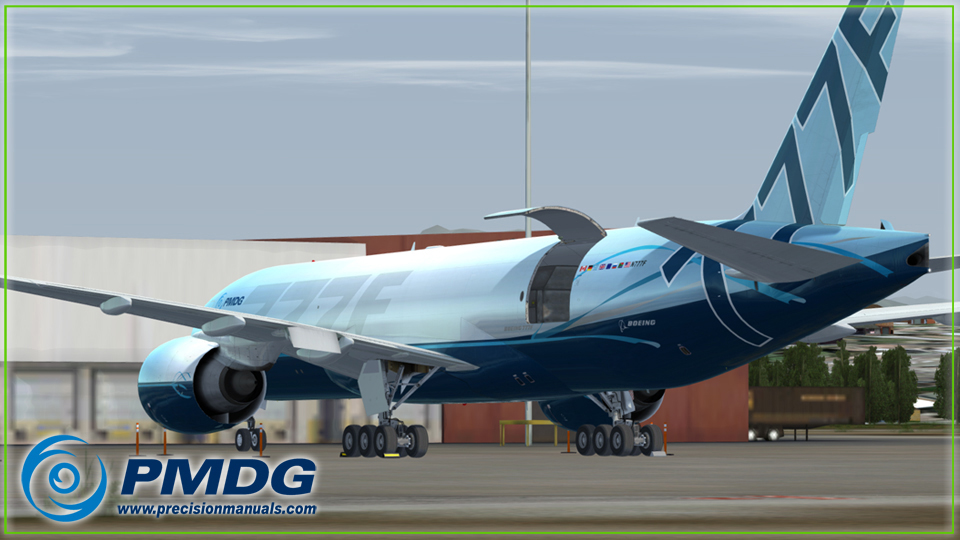

manually set the altitude in the approach plan to 8500 ft at QN780 to match the chart.set the Approach to RNAVgps-G … Navigraph calls it RNAV (GNSS) G.So in this case I was at about 11,000 FT on a GPS track towards waypoint NINID, and: But, VNAV will now work for the descent most of the way on this one. That’s the only way on this particular approach because it does not have a designated runway as others above have noted, and so there is no Glide Path, you have to fly it in to the final runway yourself. I can confirm that as of MSFS SU10 (Beta 1.27.11.0) the Working Title G1000 NXi (which will be default in the sim for planes that use G1000) does follow the vertical guidance of this approach - IF you set it up correctly using VNAV.

It depends on the equipment in the plane (and on how MSFS has modelled it). Something else more complex is going on here – and no idea what that is. It would appear that the above is not 100% reproducible, and the existence off Waypoints between the FAF and the Runway, sometimes does, and sometimes does not effect the decent on the GPS glideslope from the FAF. N ote: These are my personal finding and corresponding conclusion… without being able to review the Asobo Source code, its only my theory as to explain what appears to be happening UPDATE: The more advanced Airlines with more advance and recent coded FMCs most likely do not suffer from this, but smaller GA planes with simpler old APs do ! This most likely explains why some report vertical Guidance in Rnav working for some, but not others – it depends on the particular approach.
Lnav fsx code#
So if your selected Rnav approach has waypoints after the FAF, current Asobo Code will not switch from GS-Arm to GS at the FAF, but will wait to try to do this at the last WP before the runway !!įAF BADDON, last fix on Approach, will switch from Arm to Active at BADDN if at appropraite altitude, (CORRECT)įAF is DIYAK, BUT, there are additional Waypoints on the approach between the FAD and te runway.Īsobo default code, will take the LAST WP as the Waypoint to switch from arm to active, assuming you are way down near 560 ft at the waypoint. In some cases, this may be true, in others it is not. It seems to “Assumes” it is the last one before the runway. It would seem that teh standard Asobo code (based on the old 10+ year old FSX code), is not able to identify which Fix on an Approach is the FAF. The shown approach is only certified for LNAV, which makes sense as it is a circling approach and not assigned to a specific runway. If you have the required equipment, you can use the lower minimum. In any case, if an RNAV approach is certified for anything beyond LNAV, you will see separate minimums for the additional equipment certifications i.e.

The latter is extremely expensive IRL and is probably only currently available in MSFS if you are equipped with a GTN750Xi or flying the PMDG 737. That said, some RNAV approaches are certified for different minimums depending on whether the aircraft is equipped with LNAV, LNAV with VNAV or WASS (wide area augmentation system). In fact, the “dive and drive” method of approaches (descending in steps) that was taught back when I was flying is no longer recommended and descending with a constant glide path angle is preferred. If the GPS navigation unit in the aircraft is sophisticated enough, it will be able to provide vertical assistance and you can use it regardless.

RNAV (Area Navigation) approaches are based on GPS waypoints there is no ground equipment such as you would find with an ILS.
Lnav fsx how to#
This page was last updated 13:28 Tuesday 17th January 2023.I am looking at this chart and I don’t know how to find out whether the approach has vertical assistance or not. SeeYou is a payware program to an analyse your flights using an IGC file.Ĭopyright © UK Virtual Gliding Association 2009-2021
Lnav fsx download#
Ian Forster-lewis Program to add an IGC logger to the FSX Add-on Menu.Ĭambridge Aero Explorer Download (4.38 Mb)Ĭambridge Aero Explorer is a program to an analyse your flights using an IGC file. CumulusX! creates thermal lift with appropriate clouds.
Lnav fsx simulator#
Get the glider polars from within FSX and then view them on the Polar ViewerĬumulusX! Find Peter's website on the links page.ĬumulusX! is an add-on for Microsoft Flight Simulator X only by Peter Lürkens for the creation of a soaring environment. WinchX! Replacement Voice Files V1.1 Download (591.2 Kb)
Lnav fsx manual#
Written by James AllenĬaiset Instruments Manual - Advanced Download (267.81 Kb)Īdvance usage instructions for Max Roodveldts' GPS-NAV, LNAV and CAF Variometer included in the more advanced gliders.Ī simple utility that enables muliplayer between FSX Boxed, FSX Steam and P3D, developed by Peter Memmott Caiset Instruments Manual - Basic Download (437.18 Kb)īasic instructions for Max Roodveldts' GPS-NAV, LNAV and CAF Variometer included in the more advanced gliders.


 0 kommentar(er)
0 kommentar(er)
